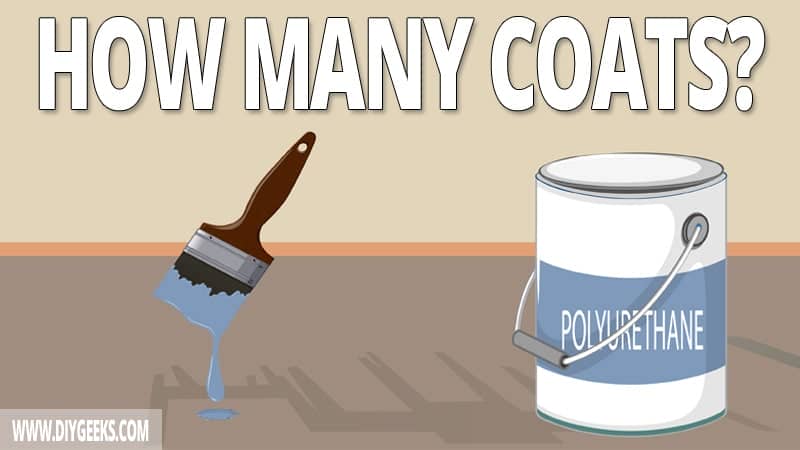You need between 1-2 thin polyurethane coats for indoor surfaces that don’t need much protection and between 3-5 polyurethane coats for exterior surfaces that require more protection.
The number of coats depends on the polyurethane type, surface type, and whether the surface is painted or not. For instance, you need more water-based polyurethane coats than oil-based polyurethane as it has a thinner viscosity.
The minimum number of polyurethane coats is one (1) while the maximum is five (5).
Why Does The Number Of Polyurethane Coats Matter?
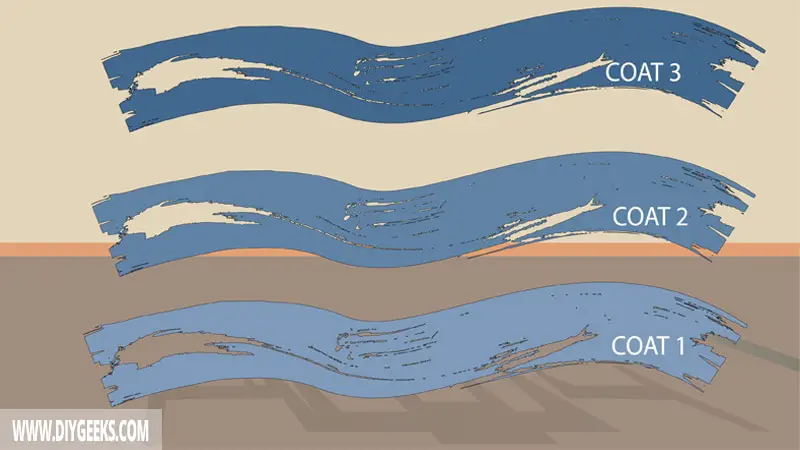
The number of polyurethane coats matters for the following reasons.
- Durability. Each polyurethane coat you add increases the durability of the finish. The polyurethane finish offers moisture-resistance, UV-resistance, and scratch-resistance features. The thicker the coating, the harder for liquids to penetrate it. However, there’s a limit on how much protection the coating can offer, if you add more than 5 coats the finish won’t add more protection. Also, if you don’t add enough coats (less than 2), the finish won’t be thick enough and won’t offer moisture, UV, or scratch-resistant features.
- Clarity. Polyurethane is a colorless sealer (there are tinted options, too) that produces a glossy and clear finish. If you add more than 5 coats (for water-based polyurethane) the finish will become blurry, and you won’t see the wood grain. If you add more than 3-4 coats of oil-based polyurethane, the finish might turn yellow.
- Coverage. Polyurethane can penetrate and seal porous surfaces, such as wood, providing uniform coverage. If you apply less than required coats, polyurethane will penetrate the porous surface, but won’t protect it. It’s important to add 1-2 extra coats for porous surfaces for proper protection.
- Dry Time. The more coats you apply, the longer polyurethane takes to dry because there’s more solvent on the surface. Since the solvent must evaporate for the coating to dry, more coats will mean a longer dry time.
How Many Oil-based Polyurethane Coats Do You Need?
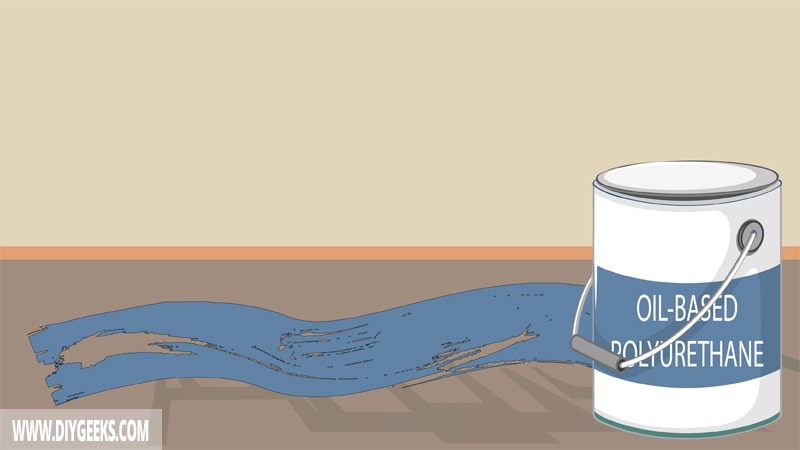
You need between 2-3 oil-based polyurethane coats. You need two (2) coats for interior low-traffic surfaces, and three (3) coats for exterior high-traffic surfaces.
Oil-based polyurethane is a thick sealer that produces a glossy and durable finish. So, applying more than 3 coats isn’t required.
More coats equals more protection, but only to a degree — if you apply more than 4 coats the finish won’t get more protection.
More than 4 coats will increase the chances of the finish yellowing over time as once the solvent (oil) evaporates from the coating it leaves oily deposits behind that will yellow the finish if there’s enough of it.
Less than 2 coats of oil-based polyurethane won’t produce a durable, protective, or glossy finish.
How Many Water-based Polyurethane Coats Do You Need?
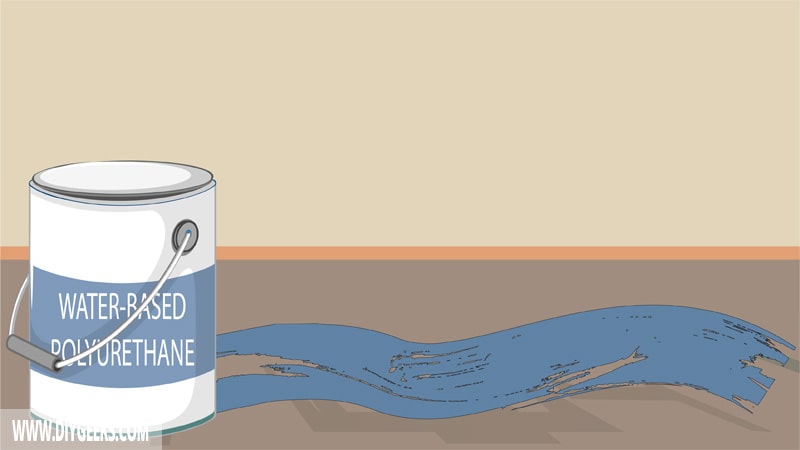
You need between 3-5 water-based polyurethane coats. You need three (3) coats for interior low-traffic surfaces, and five (5) coats for exterior high-traffic surfaces.
You can apply more coats of water-based polyurethane as it isn’t thick and doesn’t leave oily deposits behind as it uses water as its solvent.
The maximum number of coats of water-based polyurethane is five (5) — more than 5 coats and the finish will turn cloudy or blurry.
Applying too many coats is time-consuming as you must wait for each coat to dry before applying the next one. The longer the sealer stays wet or sticky, the more dirt and dust it will accumulate, which can result in a sticky finish.
How Many Coats of Polyurethane For Different Surfaces?
The number of coats of polyurethane for different surfaces is listed below.
Floors
You need 3 oil-based polyurethane and between 3-5 water-based polyurethane coats over floor surfaces.
Don’t apply more than 5 coats as the finish will become blurry, too thick, and can reflect light too much.
You can apply 2 coats for low-traffic floors as they don’t need much protection and don’t see much foot traffic.
Wood
You need 2 coats for indoor wood surfaces and 3-5 coats for outdoor wood surfaces.
Indoor wood surfaces aren’t exposed to high-traffic, UV rays, moisture, or weather elements so they don’t need much protection. Outdoor surfaces are exposed to weather elements (sun, rain) and dirt, so they need more protection.
Use exterior polyurethane for outdoor wood surfaces as it’s formulated with extra additives (such as UV-blockers) and offers better protection.
Note: Wood is a porous surface so it can absorb too much polyurethane, so it’s advised to apply 1-2 coats of paint, primer, or wood conditioner to prevent over-absorption.
All types of wood and the number of polyurethane coats for each are listed below.
| Wood Type | Number of Polyurethane Coats |
|---|---|
| Pine | Indoor: 3-4 coats. Outdoor: 3-5 coats. |
| Oak | Indoor: 3-4 coats. Outdoor: 3-5 coats. |
| Maple | Indoor: 3 coats. Outdoor: 3-4 coats. |
| Cherry | Indoor: 3 coats. Outdoor: 3-4 coats. |
| Walnut | Indoor: 2-3 coats. Outdoor: 3 coats. |
| Mahogany | Indoor: 2-3 coats. Outdoor: 3 coats. |
| Birch | Indoor: 2 coats. Outdoor: 3 coats. |
| Ash | Indoor: 2 coats. Outdoor: 3 coats. |
| Teak | Indoor: 2 coats. Outdoor: 3 coats. |
| Cedar | Indoor: 2 coats. Outdoor: 3 coats. |
Baseboard Trim
You need two (2) polyurethane coats over baseboard trims as they are positioned at the base of the walls and aren’t exposed to high traffic or other elements, so they don’t need much protection.
Exterior Walls
You need five (5) exterior polyurethane coats over exterior walls as they are constantly exposed to weather elements (sun, rain) and need more protection.
Don’t apply water-based polyurethane for exterior walls as they don’t offer the needed protection.
Stairs
You need 3-4 oil-based coats and 5 water-based polyurethane coats over stairs.
Starts are riddled with dust and debris, so ensure to sand and prime them before applying the sealer.
Depending on how large the stairs are, you can use a brush or sprayer to apply the polyurethane. It’s important to seal the entire staircase, including the banisters, and not only the steps so the whole staircase matches.
Kitchen Cabinets
You need 3-4 polyurethane coats over kitchen cabinets as they are exposed to scratches, heat, and touches, so they need more protection.
Accompanied by the heat, the kitchen cabinets are also exposed to steam, which is a source of moisture, so having a moisture-resistant sealer is necessary.
Pine Walls
You need 2-3 polyurethane coats over pine walls.
Table
You need 3-4 water-based polyurethane coats and 4 oil-based polyurethane coats over exterior table surfaces. Exterior table surfaces are exposed to weather elements and need more protection.
Note: Adding too many coats of polyurethane over a table will make the finish too glossy (reflect light) if the table is under a light source (or outdoors).
Wood Countertops
You need 2-3 polyurethane coats over wood countertops as they don’t need much protection and are usually located under a light source.
The glossiness of the polyurethane finish will reflect light and make it uncomfortable to work there.
How Long To Wait Between Polyurethane Coats?
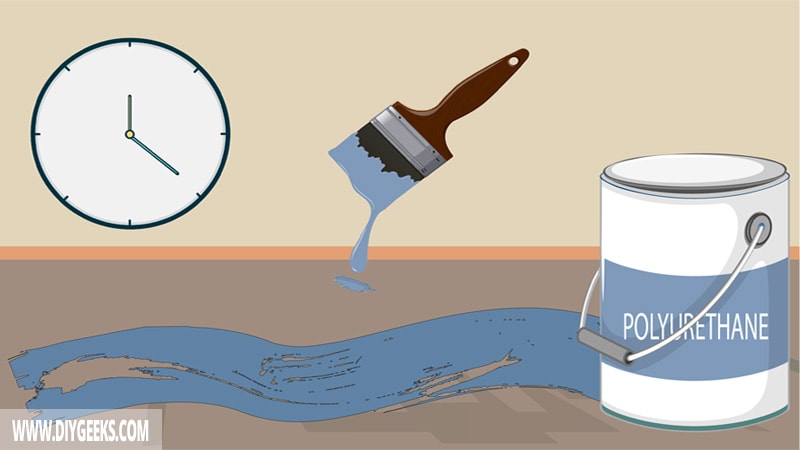
Water-based polyurethane takes between 6-8 hours, while oil-based polyurethane takes around 24 hours to dry between coats. For polyurethane to dry, the solvent (oil or water) must evaporate fully from the coating.
Water-based polyurethane dries faster because it uses water as its solvent, and water evaporates faster from the coating. Oil-based polyurethane takes longer to dry because of its oily (natural or synthetic) solvent.
If you re-coat too soon, the coating will have poor adhesion, reduced durability, and might turn sticky. That’s because the solvent (oil or water) will get trapped between coats and prevent the next coating from adhering properly.
Should You Apply Just One Coat of Polyurethane?
You shouldn’t apply just one coat of polyurethane as the finish won’t be durable, glossy, moisture-resistant, or scratch-resistant. The first coat of polyurethane penetrates the surface, so it offers minimal protection.
Should You Sand Between Polyurethane Coats?
You should sand between coats of polyurethane as it removes dust, debris, brush marks, and imperfections from the existing coating and helps the next coating to adhere better.
2 vs. 3 Coats of Polyurethane
For indoor low-traffic surfaces, you can apply 2 coats. For indoor medium-traffic surfaces apply 3 coats of polyurethane.
How Many Coats For Polyurethane Varathane?
You need 2-3 oil-based polyurethane varathane coats.
